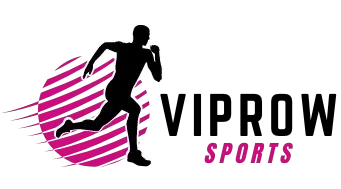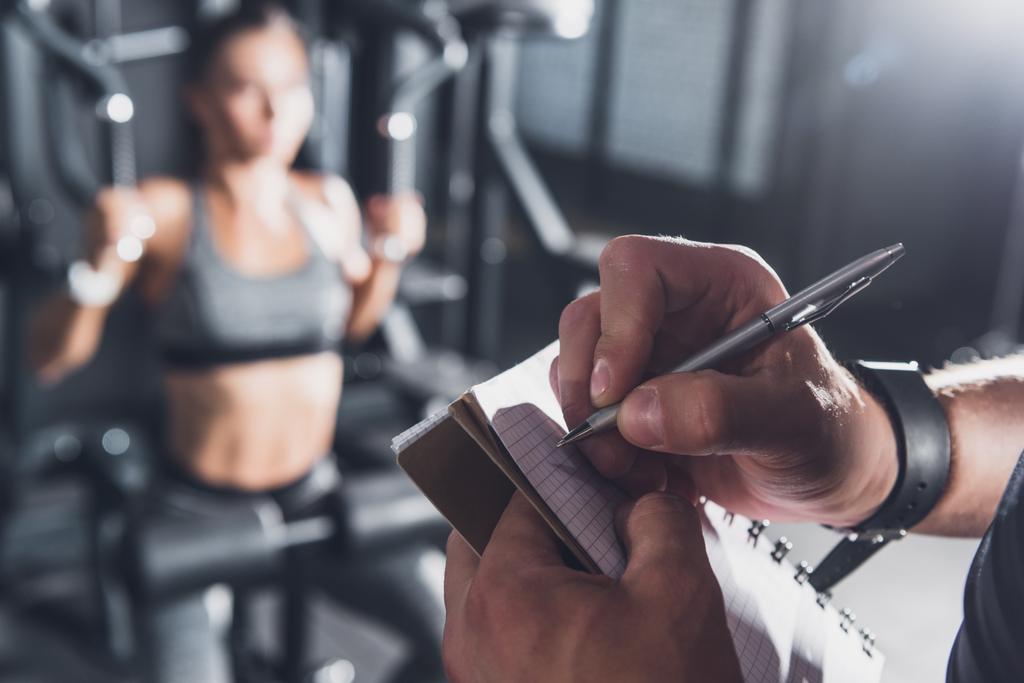How conscious are you of your movement when you’re not in the gym setting?
This is a question you need to ask yourself.
Consider all of those cranky joints, nagging injuries and unwanted bodily soreness – anything that has disrupted your joy of lifting weights, running and exercising in the gym.
Don’t you wish there were a way to combat all of these setbacks?
Well, there is. It’s called movement.
Not just your traditional movement inside of the gym. No. I’m talking about going beyond that scope of thinking. What I’m referring to focuses solely on how much and how well you move when you’re not in the gym.
You only visit the gym for roughly 1 hour each day. I’m most interested in what you’re doing for the remaining 23 hours in that day.
Those 23 hours give you the freedom and option to set yourself (and your body) apart from those that need to slow down due to injury and those that can rev it up due to freshness and movement efficiency.
BODY AWARENESS
I’m of the belief that the majority of people in the world are wildly unaware of their body, how it moves, and what it is capable of achieving.
There’s a pretty big disconnect here between the mind and the body, which ultimately leads to a decrease in health and performance, and in some cases leads to injury.
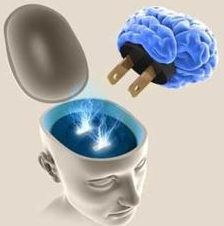
However, if people increased their overall body awareness and started to become more in sync with their surroundings, we would see a greater efficiency of movement both inside and outside of the gym.
Your body isn’t something you can just turn on and off when you choose to. You can’t just turn your body on when you’re working out in the gym, and then decide to turn the switch off when you leave there. You need to stay in-tune to your movements every moment of the day, and even during sleep.
Remember: if you’re only spending 1 hour each day at the gym working out, that leaves 23 hours of time where you’re not in the gym. People love numbers, so let me go a step further and say that the 1 hour a day you spend working out only represents 4% of your day!
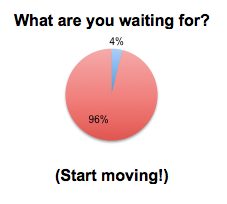
What are you doing with the remaining 96% of the day in terms of physical activity and movement that will aid in your health and performance?
Example:
You have two brothers: Joe and John.
Both brothers are physically active and enjoy lifting heavy weights at the gym. Joe is more athletically gifted and does a ton of soft tissue work, mobility drills and practices healthy movement throughout each day, which increases his overall body awareness since he often enters several ranges of motion throughout his joints that aid in his performance at the gym. John, on the other hand, just really focuses on movement when he’s actually in the gym setting and lifting weights, while barely ever encountering organized and strategic movement elsewhere.
Joe and John plan on hitting a personal record (PR) on their back squat for 405 pounds today.
Which brother would you pick to be able to not only hit the PR, but to also do so with a smoother, more efficient squat pattern without any setbacks or injuries?
I’m betting the farm on Joe. Why? Well, it’s pretty simple.
If you plan on entering a position with moderate-to-heavy loads (i.e., the barbell loaded at 405 pounds in this case), yet you barely ever visit mobility drills that put you into the deep squat position for added hip range of motion in your spare time at home, than how would you ever be able to achieve that position under heavy loads, while also avoiding injury?
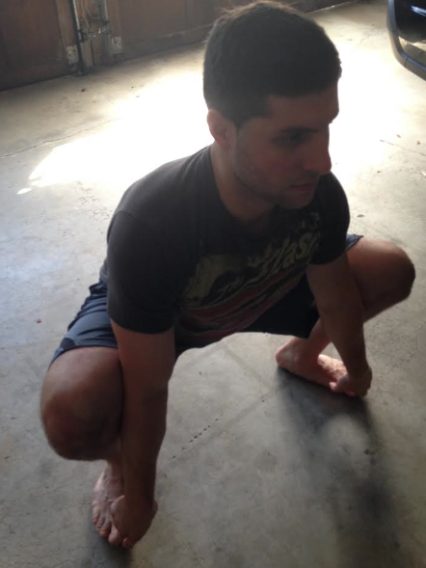
Sure, John could quite possibly hit the PR, but I’d like to see how his hips/lower back fare over time. Oppositely, I’d side with Joe who appreciates the body awareness he gets from the extra movement he receives during the remaining 96% of each day where he has undergone repetitive patterning for a greater familiarization.
The Quick (First-Step) Fix:
The quickest and most simplistic way to achieve a heightened sense of awareness in your body is to take your shoes off and walk around barefoot.
Being able to feel the ground with your bare feet creates an instant feedback system, which helps to increase your awareness through proprioception, balance and stability.
Although this is only a small step (pun intended) in the right direction toward increasing your body awareness, I think it’s pivotal. There’s a relationship that needs to be respected between your body and your surroundings. Fostering this relationship helps to build a stronger, more bulletproof joint system in the lower body, which ultimately helps to decrease the likelihood of injury over time.
Your Homework:
Walk around barefoot as much as you possibly can each day while in the comfort of your own home. During the warmer months of the year, get to grassy fields, turf fields, beaches and other places where it’s acceptable to be barefoot and move around.
SELF-MAINTENANCE
Positions and Posture:
First, you need to take a look at your current posture and also think about the positions you spend the most time in each day.
Do you tend to slouch forward? Do you typically stick your chest out while your arms hang down and back?
Do you sit at a desk all day for work and then hop into your car for the commute back home? Do you stand all day for work and often lean into one hip?
These are some typical things I see in the clients and patients I work with. To gain a deeper appreciation for how to combat these poor positions and postures, you can read into it more at a previous post I wrote here.
Obtaining good posture will not only help to protect your spine, but will also help you to decrease all of the routinely cranky areas in your body.
Daily Hacks:
By incorporating routine checks throughout the day to focus on certain areas of your body, you’ll not only be able to increase your overall body awareness, but you’ll also be able to improve your quality of movement in the gym.
The most important aspects to target for daily self-maintenance involve areas where most people spend too much time.
For instance, when you sit for long periods throughout the day, the anterior aspect of your hips take a beating after being cranked down into flexion for so long, which subsequently pulls down on your lower back.
My point: open up those hips!
Your hips, along with good thoracic extension, ungluing the bottom of your feet and ensuring proper scapular activation to safeguard the neck, are all equally important areas I focus on that tend to help the most.
Keep in mind that these are the areas we see most issues and limitations in, and that there are also many other areas we can target as well, but I’d start with these first.
- Open up your hips: (video)
- Get good thoracic extension: (video)
- Unglue the bottom of your feet: (video)
- Squeeze your shoulder blades down and back: (video)
Try to incorporate these daily checks into your daily routines to see improvement in your overall health and performance.
NON-GYM MOVEMENT
Let’s refer back to that 96%.
We’ve touched upon examples and drills related to body awareness and self-maintenance for improved quality of movement. But, what else are you doing?
This section doesn’t come with a specific thing to do, because it shouldn’t.
Humans were born to move. It’s in our DNA and blood.
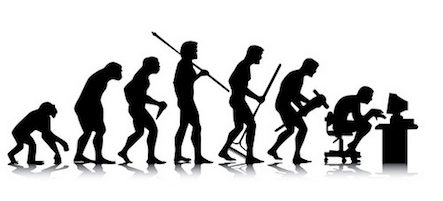
Throughout evolution we can see how human beings were quite exploratory in nature with movement and physical activity. They used to run from animals, hunt for food, swim, climb and explore.
Nowadays, people are more sedentary than ever, which has caused a decrease in movement and function. We see people sitting at desks all day for work, an incredibly low level of body awareness in space and with their surroundings, extremely poor posture and very low levels of physical activity.
It’s become quite alarming and it needs some drastic change.
Moving forward, take pride and action in this area. Incorporate movement in more daily activities than before. Am I suggesting you sprint up and down your street from dusk until dawn? No. What I’m saying is…
- …rather than watching TV every night after dinner, go for a short walk.
- …instead of sitting at your work desk each day at work, take a stroll outside and eat lunch on the go.
- …as opposed to jamming yourself in the elevator with every other co-worker, take the stairs. You’ll feel better after!
- …get up and move around every 20 minutes each day.
- …wake up every morning and move (i.e., 10-15 push-ups or squats).
- …and so on, and so forth.

Remember: exercising in a gym setting has a hefty list of benefits, and rightly so. However, the gym isn’t the only place for movement, and you’d be more efficient at most (if not all) exercises in the gym if you moved more outside of it.
Entering various ranges of motions and undergoing consistent patterning each day through movement is imperative to your success in the gym.
Keep it moving.
